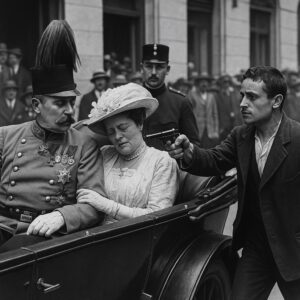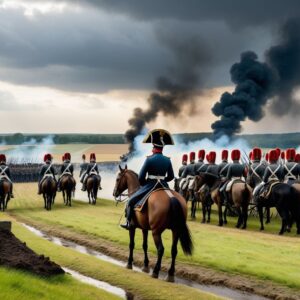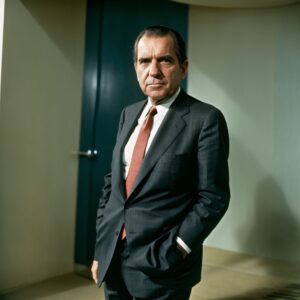Author's posts
One Big Beautiful Bill: Trump’s Monumental Legislative Gamble and Its Legacy
The Fourth of July 2025 was meant to celebrate American independence, but this year, it served a dual purpose. As fireworks blazed over Washington, D.C., President Donald J. Trump signed what he triumphantly hailed as the One Big Beautiful Bill. Clutched in his hand was a leather-bound folder thick with legislative text—nearly 1,200 pages of …
Fireworks, Freedom, and Fried Food: How America Celebrates the 4th of July
Every year, on the 4th of July, the United States of America erupts in a nationwide spectacle of celebration. It’s a day painted red, white, and blue, echoing with the sounds of fireworks, the sizzle of barbecues, and the laughter of communities coming together. Officially known as Independence Day, July 4th marks the adoption of …
The Spirit of 1776: Embracing Independence
There are moments in history that feel like the lightning strike of destiny—sudden, bright, and forever altering the landscape of what came before. July 4, 1776, stands as one of those moments. It wasn’t just a day on the calendar or the ceremonial drafting of another political document. It was, in many ways, the birth …
When Liberty Took the Stage: The Birth of American Independence
It was a warm July morning in Philadelphia, the air thick with summer and suspense. By midday, the streets near Chestnut Street hummed with activity—horses clopping on cobblestones, whispers passing between shopkeepers, and the crack of printing presses at work inside dimly lit rooms. But something much larger than daily commerce was stirring inside the …
Ink That Changed a Nation
The afternoon sun beamed down on Washington, D.C., on July 3rd, 1964, as history hung thick in the air. Inside the White House, President Lyndon B. Johnson prepared to sign one of the most transformative pieces of legislation the United States had ever seen. The Civil Rights Act of 1964 wasn’t just a document—it was …
The Day the Farmer Became a General: Washington Takes Command
The early morning sun rose reluctantly over the rolling landscape of Cambridge, Massachusetts, casting long shadows across a patchwork of tents, half-built fortifications, and the damp green fields that held the fledgling hopes of a new nation. The year was 1775. The American colonies were caught in the widening jaws of war with Great Britain, …
Shades of You: What Your Swimwear Color Says About Your Soul
Color is everywhere. It speaks to us before we even realize it. It sparks emotions, triggers memories, and often says more about our personalities than words ever could. When it comes to swimwear, the color you choose is far more than a style decision—it’s a whisper from your subconscious, a flash of your inner self …
The Day Justice Took the Pen: How the Civil Rights Act of 1964 Changed America Forever
It was a warm summer evening in Washington, D.C., when President Lyndon B. Johnson sat behind a desk in the White House and signed a document that had been years in the making — a document that would shift the course of American history forever. On July 2, 1964, the Civil Rights Act became law. …
No Gym, No Problem: Beach Workouts That Move You
When most people think of the beach, they envision leisure—sunbathing, sipping cold drinks, swimming lazily, and maybe chasing a frisbee. But the beach isn’t just a haven for relaxation; it’s also a natural playground, an open-air fitness studio with built-in resistance, calming scenery, and endless possibilities. With just your bodyweight and a splash of motivation, …
Three Bloody Days in July: When Gettysburg Became the Turning Point of the Civil War
The morning of July 1, 1863, dawned over the rolling hills of southern Pennsylvania like any other humid summer day, but it would soon erupt into one of the most pivotal and harrowing chapters in American history. The town of Gettysburg—then little more than a quiet crossroads surrounded by farms and orchards—would become a crucible …
The Birth of Canada — Confederation that Forged a New Nation
On a warm summer day in 1867, a transformative event took place that would redefine the future of North America. July 1 marked the official birth of Canada, a new Dominion forged from the union of three British colonies: Nova Scotia, New Brunswick, and the Province of Canada, which was split into Ontario and Quebec. …
One-Piece vs. Bikini: A Battle of Style, Confidence, and Self-Expression
Swimwear is more than just fabric stitched together to endure saltwater and sunshine. It’s a personal statement. A declaration of mood, confidence, cultural awareness, and even rebellion. For decades, the beach has served as a runway for two dominating icons: the one-piece swimsuit and the bikini. But when it comes to choosing between the two, …
The Tunguska Event — Mystery Explosion That Flattened Siberia and Still Baffles Scientists
On a quiet summer morning in Siberia on June 30, 1908, a tremendous explosion ripped through the remote Tunguska region, leveling an estimated 80 million trees across an area of more than 2,000 square kilometers. The blast was so powerful that it registered on seismic instruments thousands of miles away, and its shockwave circled the …
Bikini Confidence: Stories of Real Women Embracing Themselves
For many women, the act of putting on a bikini isn’t just about dressing for the beach—it’s a radical act of self-acceptance. In a culture obsessed with perfection, where unrealistic beauty standards are paraded across social media and magazine covers, stepping into the sun in two pieces can feel like a quiet rebellion. It’s not …
How the iPhone Changed the World Forever — The Dawn of the Smartphone Revolution
On June 29, 2007, a quiet revolution took place in the pockets and palms of millions worldwide. Apple released the very first iPhone, a device that would forever change the way people communicate, work, and experience the world. It was more than just a new gadget; it was the dawn of the smartphone era, ushering …
Celestial Swim Style: The Best Bikini Looks for Every Zodiac Sign This Summer
As the sun stretches high into its summer throne and the days are soaked in golden light, it’s the season when everyone’s spirit turns toward sunshine, surf, and sandy toes. July brings with it peak summer energy, and whether you’re hitting a rooftop pool, lounging beachside, or just soaking up rays in your backyard, this …
Assassination of Archduke Franz Ferdinand — The Spark That Ignited World War I
On a sunny summer day in 1914, the streets of Sarajevo buzzed with an uneasy mix of excitement and tension. The heir to the Austro-Hungarian throne, Archduke Franz Ferdinand, along with his wife Sophie, was making a much-anticipated visit to the city in Bosnia and Herzegovina, a region rife with political tension and nationalist fervor. …
Barely There, Boldly Heard: The Story of the Thong Bikini
The thong bikini may be one of the most polarizing items of clothing ever created—provocative, defiant, and unapologetically bold. For some, it’s a scandalous symbol of excess; for others, it’s a badge of body confidence and liberation. But like all garments steeped in controversy, the thong bikini has a complex, layered story that reaches far …
The ATM Introduced — Banking Revolutionized by a Machine
Imagine a world without the convenience of withdrawing cash anytime. Before June 27, 1967, this was reality for many. On this day, the world witnessed a quiet revolution that forever changed banking: the introduction of the first Automated Teller Machine (ATM) in London. This machine was the dawn of 24/7 access to cash and laid …
Swimsuit Revolutions: How Women Redefined Summer Fashion
In the summer of 1946, a French engineer named Louis Réard unveiled a design so audacious, so scandalous, that no Parisian runway model dared to wear it. Instead, he hired a nude dancer from the Casino de Paris named Micheline Bernardini to don the tiny two-piece swimsuit. Réard named it the “bikini,” after the Bikini …
The Berlin Airlift Begins — A City Held Hostage and a Lifeline in the Cold War
The cold winds of political tension were blowing hard over post-war Europe in 1948. After the devastation of World War II, Germany was divided among the Allied powers, with Berlin itself split into sectors controlled by the U.S., Britain, France, and the Soviet Union. But tensions soon turned to confrontation, and on June 26, 1948, …
Straps, Strings, and Statements: What Your Bikini Style Says About You
Bikinis are more than swimwear. They’re symbols—declarations, even. Every summer, beaches and pool decks transform into vibrant runways where women from all walks of life express parts of themselves through these tiny pieces of fabric. Behind every high-waisted bottom, bandeau top, or string triangle lies a story of comfort, confidence, rebellion, or nostalgia. And fashion …
The Korean War Begins — A Cold War Conflict Ignites
The morning of June 25, 1950, began like many others on the Korean Peninsula. In the humid summer stillness, farmers tended to rice paddies in the south, children prepared for church services, and families across the land clung to a fragile post-colonial hope of a better future. But within hours, the dreams of millions would …
The Battle of Bannockburn — A Defining Moment for Scottish Independence
The morning sun rose over the Scottish lowlands on June 24, 1314, casting long shadows over the dew-drenched grass of Bannockburn. For many who stood there, poised in crude armor with weary eyes and anxious hearts, it could have been their final sunrise. Yet what followed in those hours would not be a quiet march …
Title IX Enacted — Opening Doors for Gender Equality in Education and Sports
On a warm summer day in 1972, while much of the country was consumed by the mounting turmoil of the Vietnam War and the shadows of the Watergate scandal, something quieter—but no less revolutionary—was unfolding. It didn’t come with loud protests or front-page headlines. Instead, it arrived in the form of a signature on a …
The Longest Day — Celebrating the Summer Solstice and the First Day of Summer
Every year, as June rolls in and the days grow longer, a remarkable natural phenomenon quietly unfolds across the Northern Hemisphere — the Summer Solstice. This event, which typically falls on June 21, marks the official beginning of summer and brings with it the longest period of daylight of the entire year. More than just …
A Mountain State Born from Divided Loyalties: How West Virginia Defied a Confederacy to Join the Union
In the heart of America’s darkest hours during the Civil War, when brother was pitted against brother and the nation seemed irreparably torn apart, a remarkable and almost unheard-of event took place. On June 20, 1863, West Virginia officially became the 35th state of the United States—the only state to be formed by seceding from …
Juneteenth: The Long-Awaited Dawn of Freedom
June 19, 1865, began like any other humid day in Galveston, Texas—sunrise casting golden light over the Gulf, fishermen preparing their nets, merchants opening up shop. Yet, for hundreds of thousands of enslaved African Americans across Texas, it was a day unlike any other. It was the day freedom finally arrived, years overdue but no …
The Day Europe’s Fate Was Sealed: Napoleon’s Final Stand at Waterloo
June 18, 1815, was a day etched forever in the annals of history—a day when the fate of Europe hung in the balance. The rolling fields near the small Belgian village of Waterloo became the stage for one of the most pivotal battles of all time, a clash that would mark the end of an …
When a Break-In Unraveled a Presidency: The Story of Watergate
June 17, 1972, was a warm, uneventful Saturday in Washington, D.C., the kind of summer day that hums with the usual rhythm of a capital city. People were going about their weekend routines, unaware that within the walls of a sleek, modern building known as the Watergate complex, a political earthquake was about to detonate. …































